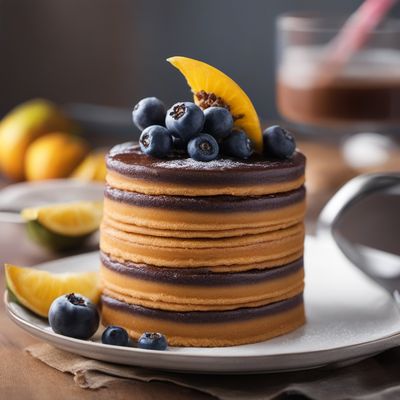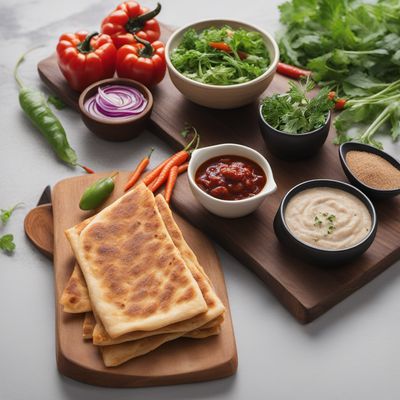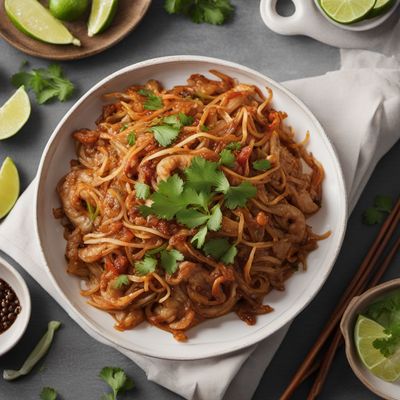
Recipe
Kuih Lapis - Malaysian Layered Cake
Rainbow Delight: A Vibrant Twist on Malaysian Layered Cake
4.5 out of 5
Indulge in the rich flavors of Malaysia with this delightful recipe for Kuih Lapis. This traditional Malaysian layered cake is a true culinary masterpiece, showcasing a harmonious blend of fragrant pandan and coconut flavors.
Metadata
Preparation time
30 minutes
Cooking time
30 minutes
Total time
60 minutes
Yields
8 servings
Preparation difficulty
Medium
Suitable for
Vegetarian, Vegan (if using vegan-friendly food coloring), Gluten-free (if using gluten-free rice flour), Nut-free, Dairy-free
Allergens
N/A
Not suitable for
Paleo, Keto, Low-carb, High-protein, High-fat
Ingredients
-
250g (2 cups) rice flour 250g (2 cups) rice flour
-
200g (1 cup) sugar 200g (1 cup) sugar
-
800ml (3 1/3 cups) coconut milk 800ml (3 1/3 cups) coconut milk
-
1/2 tsp pandan paste 1/2 tsp pandan paste
-
Natural food coloring (red, yellow, blue) Natural food coloring (red, yellow, blue)
-
Pinch of salt Pinch of salt
Nutrition
- Calories (kcal / KJ): 250 kcal / 1046 KJ
- Fat (total, saturated): 10g, 8g
- Carbohydrates (total, sugars): 35g, 20g
- Protein: 3g
- Fiber: 1g
- Salt: 0.1g
Preparation
-
1.In a large mixing bowl, combine the rice flour, sugar, and salt.
-
2.Gradually add the coconut milk while stirring continuously to ensure a smooth batter.
-
3.Divide the batter equally into 6 portions.
-
4.Leave one portion plain, and add pandan paste to another portion to create a green layer.
-
5.Add a few drops of red food coloring to one portion, yellow to another, and blue to the remaining two portions, creating layers of different colors.
-
6.Grease a square baking pan and pour the plain batter into the pan, spreading it evenly.
-
7.Steam the first layer over medium heat for 5 minutes or until set.
-
8.Repeat the process with each colored layer, steaming them one by one until all layers are cooked.
-
9.Allow the cake to cool completely before cutting it into squares or diamond shapes.
-
10.Serve and enjoy!
Treat your ingredients with care...
- Pandan leaves — To extract pandan juice, blend pandan leaves with water and strain the mixture. Use the resulting green liquid as a natural coloring and flavoring agent.
Tips & Tricks
- To achieve clean and distinct layers, make sure each layer is steamed until fully set before adding the next layer.
- For a more intense pandan flavor, you can increase the amount of pandan paste or use freshly extracted pandan juice.
- Experiment with different natural food coloring options to create your desired color palette.
- Allow the cake to cool completely before cutting to ensure clean and neat slices.
- Store any leftovers in an airtight container to maintain freshness.
Serving advice
Serve Kuih Lapis as a delightful snack or dessert. It pairs well with a cup of hot tea or coffee. Enjoy it on its own or share it with friends and family during festive gatherings.
Presentation advice
To enhance the visual appeal, arrange the Kuih Lapis squares on a platter in a rainbow pattern, showcasing the vibrant colors. Garnish with fresh pandan leaves or coconut flakes for an extra touch of elegance.
More recipes...
More Malaysian cuisine dishes » Browse all
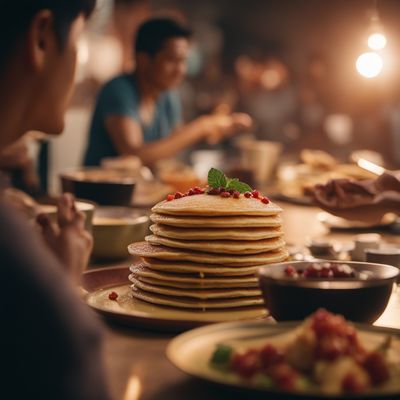
Apam balik
Turnover pancake
Apam balik is a Malaysian dish that consists of a sweet pancake filled with peanuts and sugar.

Nasi kandar
Nasi kandar is a popular Malaysian dish that is made with rice and a variety of curries and side dishes. It is a flavorful and spicy dish that is...
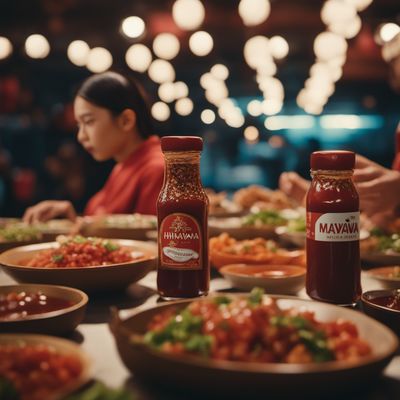
Mahyawa
Mahyawa sauce
Mahyawa is a traditional condiment from the Middle East that is made with pomegranate molasses, garlic, and chili peppers. It is sweet, sour, and...
